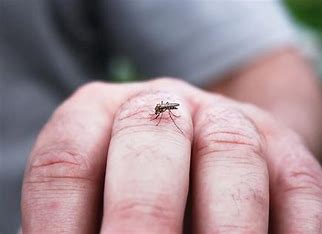Title: Understanding Dengue Fever: Causes, Symptoms, Prevention, and Treatment
Introduction
Dengue fever is a mosquito-borne viral infection that poses a significant public health concern in many tropical and subtropical regions around the world. It is transmitted through the bite of infected Aedes mosquitoes and can cause a wide range of symptoms, ranging from mild flu-like illness to severe and potentially life-threatening complications. This article provides an overview of dengue fever, including its causes, symptoms, prevention strategies, and available treatment options.
Causes and Transmission
a. Dengue Virus: Dengue fever is caused by the dengue virus, which belongs to the Flaviviridae family. There are four distinct serotypes of the virus (DEN-1, DEN-2, DEN-3, and DEN-4), and infection with one serotype provides lifelong immunity against that specific serotype but not against the others.
b. Mosquito-Borne Transmission: The primary mode of dengue virus transmission is through the bite of infected female Aedes mosquitoes, primarily Aedes aegypti and, to a lesser extent, Aedes albopictus. These mosquitoes typically breed in stagnant water sources found in urban and semi-urban areas.
c. Vertical and Transfusion Transmission: In rare cases, dengue virus can be transmitted from an infected pregnant woman to her fetus during pregnancy or delivery. There have also been instances of dengue transmission through blood transfusions or organ transplantation.
Symptoms and Clinical Manifestations
a. Incubation Period: The incubation period of dengue fever ranges from 4 to 10 days after being bitten by an infected mosquito.
b. Mild to Severe Symptoms: Dengue fever can present as a mild, self-limiting illness known as dengue fever or as a more severe form called dengue hemorrhagic fever (DHF) or dengue shock syndrome (DSS). Common symptoms include sudden high fever, severe headache, joint and muscle pain, rash, fatigue, and mild bleeding manifestations (e.g., nose or gum bleeding).
c. Severe Complications: In severe cases, DHF or DSS may develop, characterized by plasma leakage, organ dysfunction, and an increased risk of bleeding. These complications can be life-threatening and require immediate medical attention.
Prevention and Control Measures
a. Mosquito Control: Effective mosquito control measures play a crucial role in preventing dengue fever. This includes eliminating mosquito breeding sites by removing stagnant water containers, using larvicides or insecticides, and employing protective measures such as window screens and bed nets.
b. Personal Protection: Individuals living in or visiting dengue-endemic areas should take personal protective measures to prevent mosquito bites. This includes wearing protective clothing, using insect repellents, and avoiding outdoor activities during peak mosquito activity times.
c. Community Engagement: Public health campaigns and community engagement are essential in raising awareness about dengue fever, educating communities about prevention strategies, and fostering collective efforts in mosquito control.
Diagnosis and Treatment
a. Diagnostic Tests: Diagnosis of dengue fever involves clinical evaluation, assessment of symptoms, and laboratory tests. Serological tests, such as enzyme-linked immunosorbent assay (ELISA) and polymerase chain reaction (PCR), are used to confirm dengue infection and determine the specific serotype.
b. Supportive Care: There is no specific antiviral treatment for dengue fever. Supportive care focuses on managing symptoms, maintaining hydration, and providing relief from pain and fever through the use of analgesics and antipyretics.
c. Hospitalization for Severe Cases: Severe cases of dengue fever, particularly DHF and DSS, require hospitalization. Close monitoring of vital signs, fluid management, and appropriate medical interventions are crucial to prevent complications and reduce mortality.
Conclusion
Dengue fever poses a significant health burden in many parts of the world. Understanding its causes, symptoms, prevention strategies, and available treatments is essential for individuals living in endemic areas or traveling to dengue-prone regions. By implementing effective mosquito control measures, practicing personal protection, raising awareness, and ensuring early diagnosis and appropriate medical care, we can mitigate the impact of dengue fever and work towards its prevention and control.

